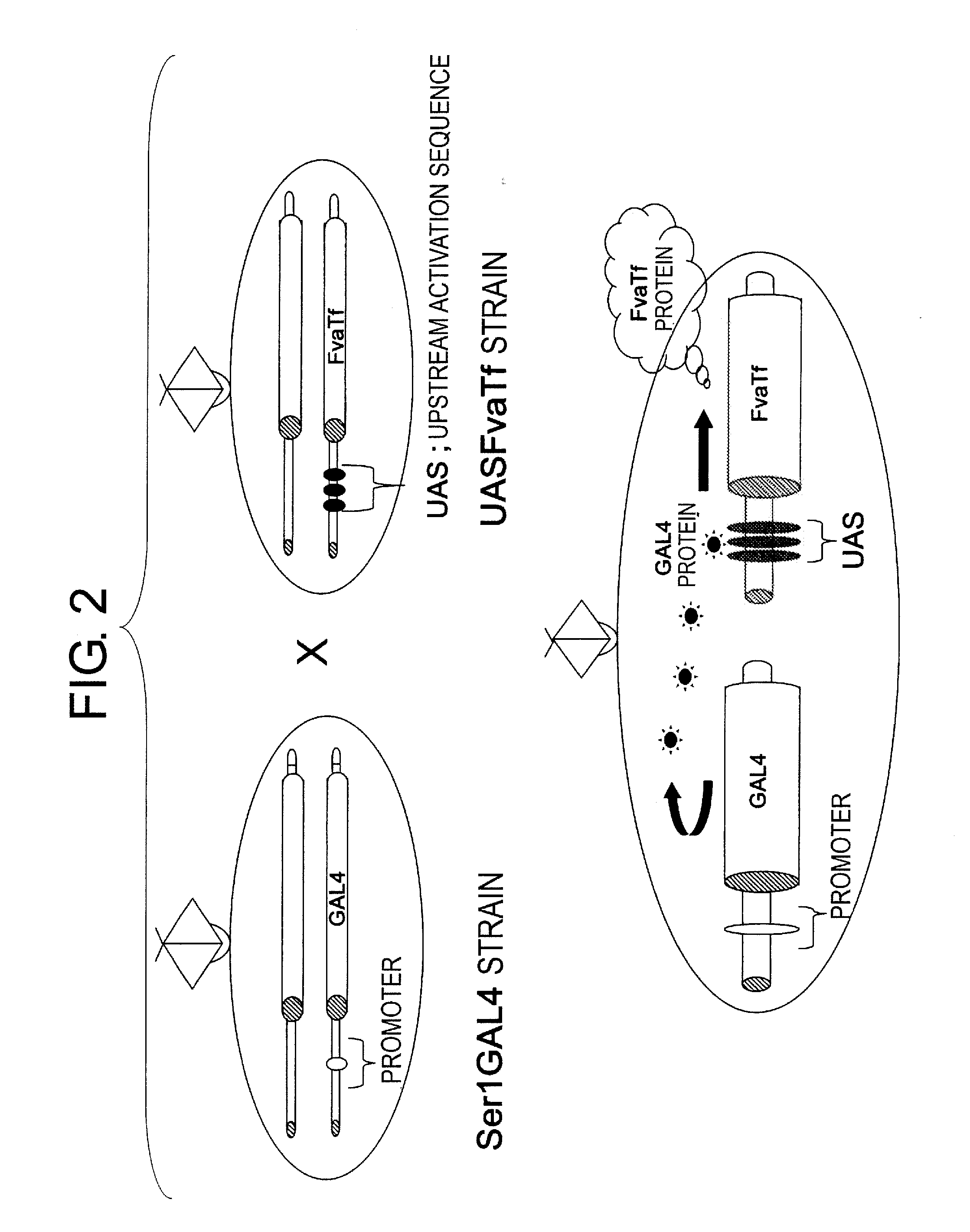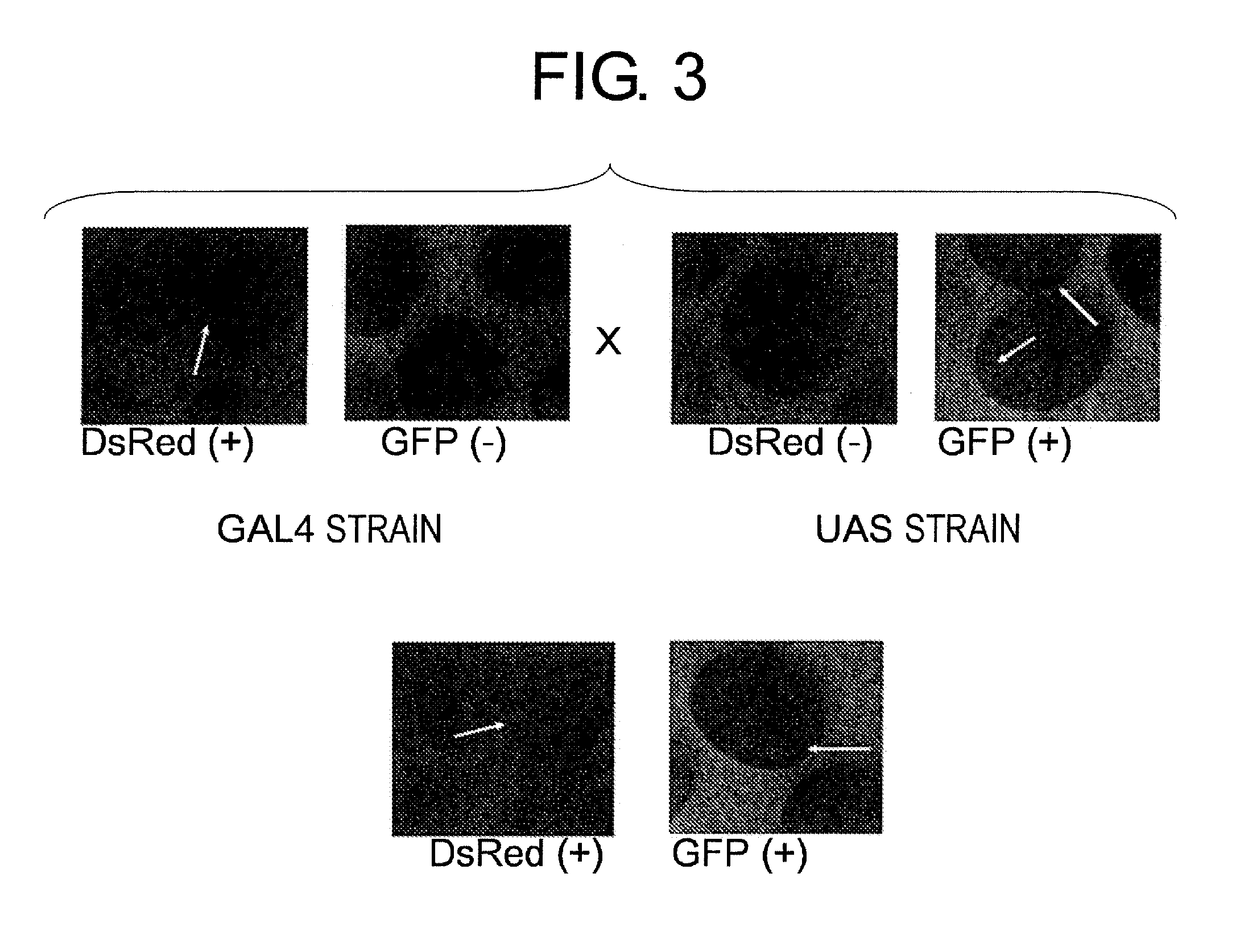Transgenic silkworm capable of producing antibody and method for production thereof
a silkworm and antibody technology, applied in the field of silkworm production methods, can solve the problems of increasing production costs, insufficient use as pharmaceuticals or diagnostic agents, and many problems of recombinant antibodies, and achieve the effect of increasing the importance of recombinant antibodies
- Summary
- Abstract
- Description
- Claims
- Application Information
AI Technical Summary
Benefits of technology
Problems solved by technology
Method used
Image
Examples
example 1
Materials and Methods
1. Construction of a Plasmid Vector
[0423]In this study, the plasmid vector pUASFvaTf (FIG. 1) was prepared to produce an scFv antibody from a mouse anti-human transferrin antibody that reacts with human transferrin (anti-transferrin scFv antibody: hereinafter referred to as aTf) using transgenic silkworms. This vector for production of transgenic silkworms was prepared by inserting between inverted terminal repeats of the piggyBac transposon, the antibody protein gene FvaTf fused to the promoter UAS which promotes gene expression in the presence of the yeast transcriptional regulator GAL4.
[0424]The scFv anti-human transferrin antibody was designed as follows. A DNA was designed to have a structure in which an antibody H chain variable region (VH), a flexible linker peptide (Linker), and an antibody L chain variable region (VL) are linked downstream of a human acid phosphatase secretory signal sequence in this order. Known sequences were used for the amino acid s...
example 2
Materials and Methods
1. Construction of a Plasmid Vector
[0436]In this study, the plasmid vector pBacN / lox p UASIgLUASIgH (FIGS. 7 to 9) was prepared using transgenic silkworms to produce an IgG mouse anti-human transferrin antibody that reacts with human transferrin. This vector for production of transgenic silkworms was prepared by inserting between inverted terminal repeats of the piggyBac transposon, the L chain and the H chain of the antibody protein gene fused to the promoter UAS which promotes gene expression in the presence of the yeast transcriptional regulator GAL4.
[0437]The L chain of the IgG mouse anti-human transferrin antibody was designed as follows. First, for the antibody L chain, a DNA was designed to have a structure in which an anti-human transferrin antibody Lκ chain variable region, mouse L chain J segment, and mouse Lκ chain constant region are linked downstream of a mouse immunoglobulin L chain κ (IgL) signal peptide in this order. Next, for the H chain of the...
PUM
| Property | Measurement | Unit |
|---|---|---|
| temperature | aaaaa | aaaaa |
| thickness | aaaaa | aaaaa |
| thickness | aaaaa | aaaaa |
Abstract
Description
Claims
Application Information
 Login to View More
Login to View More - R&D
- Intellectual Property
- Life Sciences
- Materials
- Tech Scout
- Unparalleled Data Quality
- Higher Quality Content
- 60% Fewer Hallucinations
Browse by: Latest US Patents, China's latest patents, Technical Efficacy Thesaurus, Application Domain, Technology Topic, Popular Technical Reports.
© 2025 PatSnap. All rights reserved.Legal|Privacy policy|Modern Slavery Act Transparency Statement|Sitemap|About US| Contact US: help@patsnap.com



